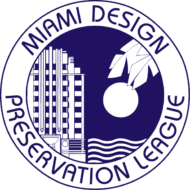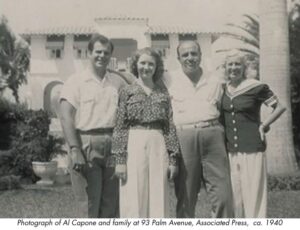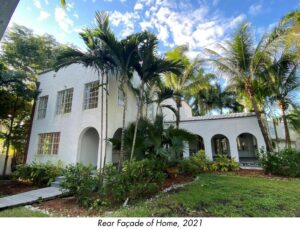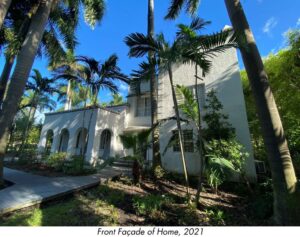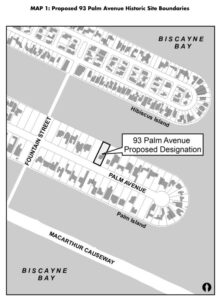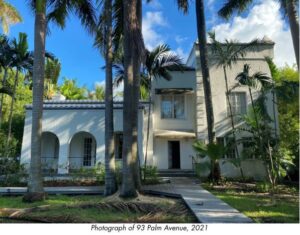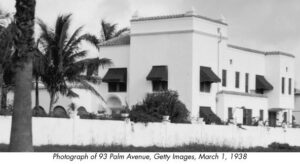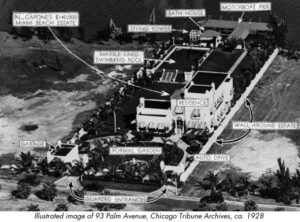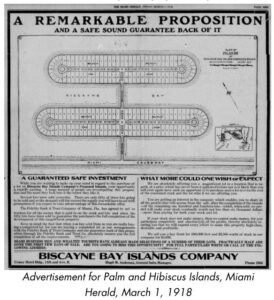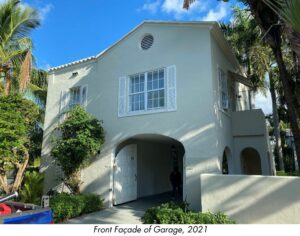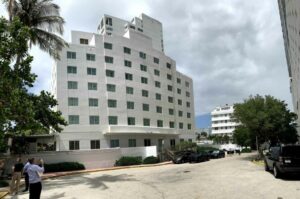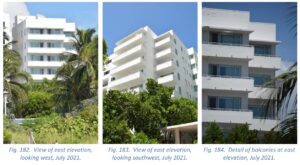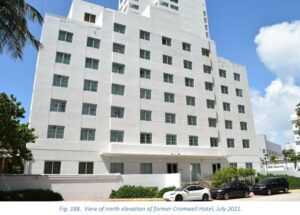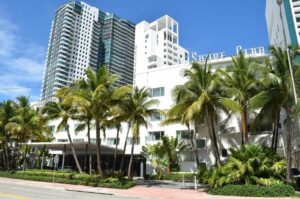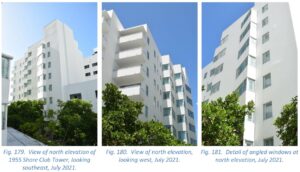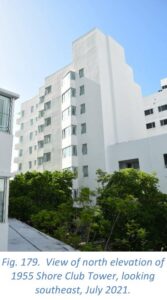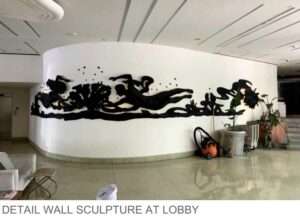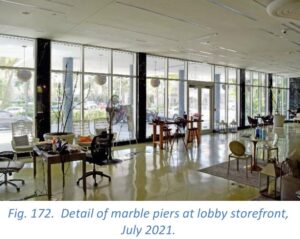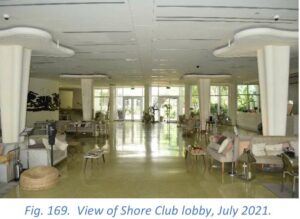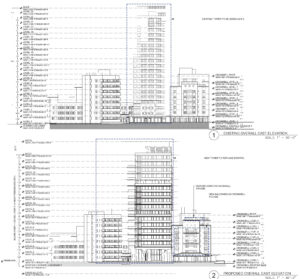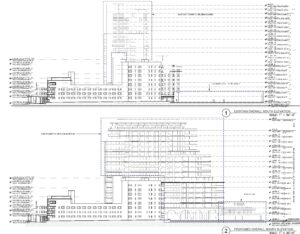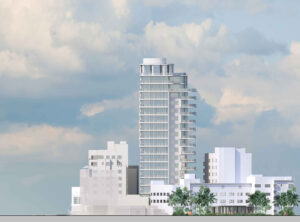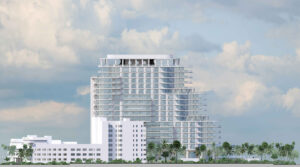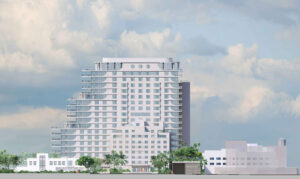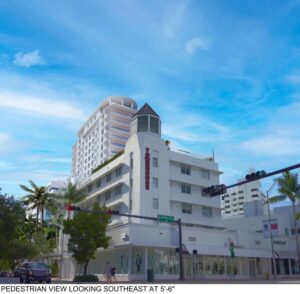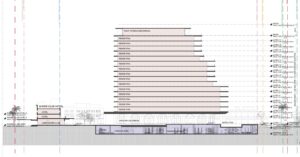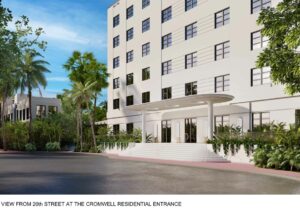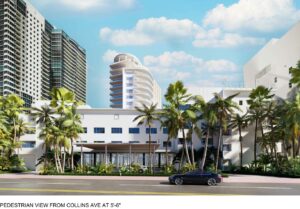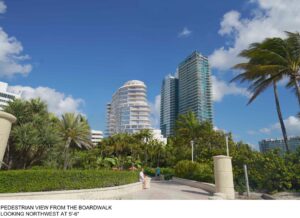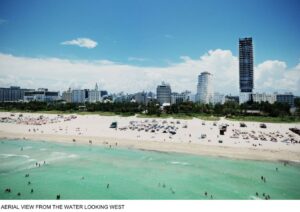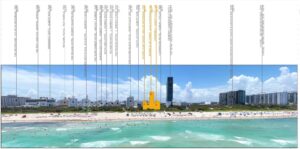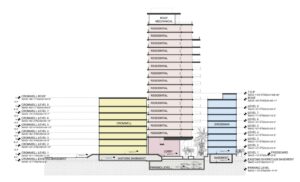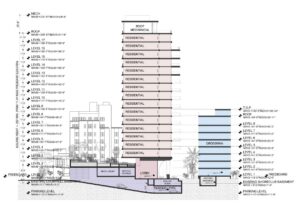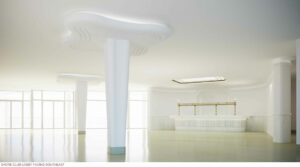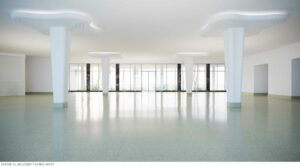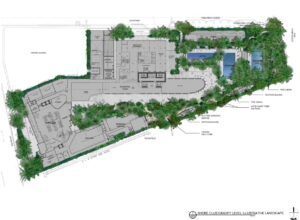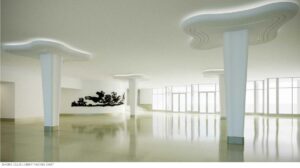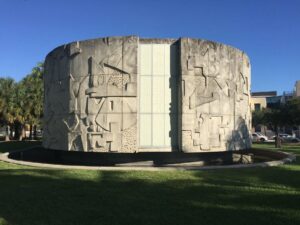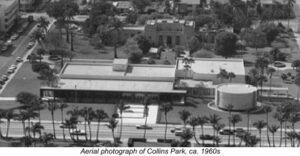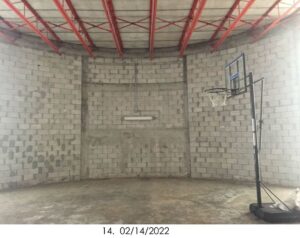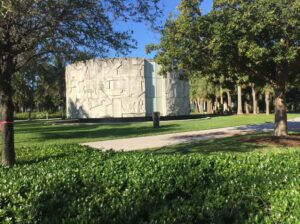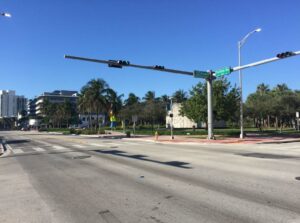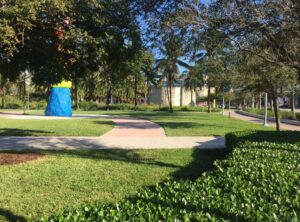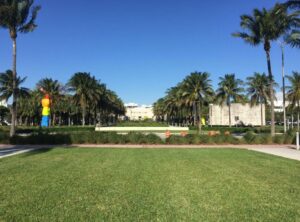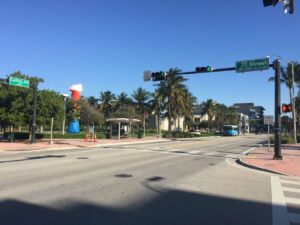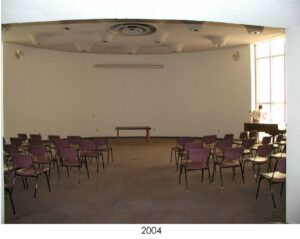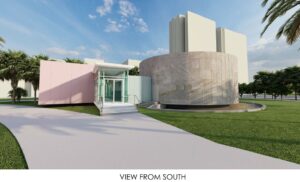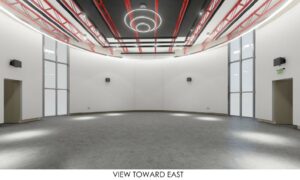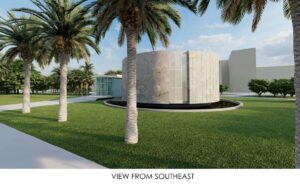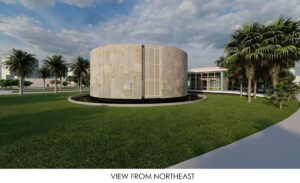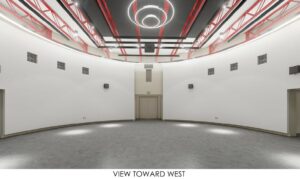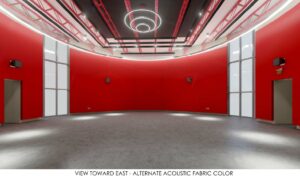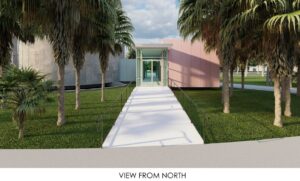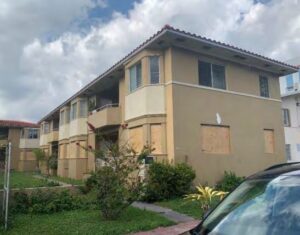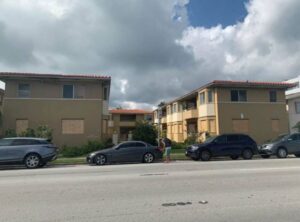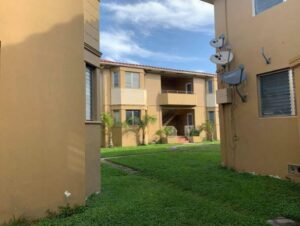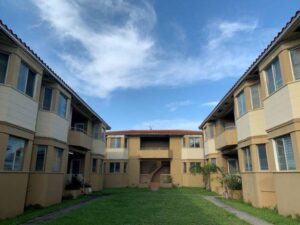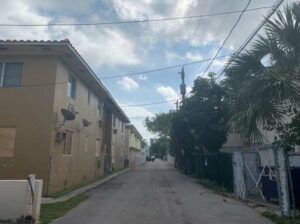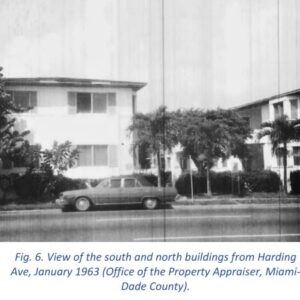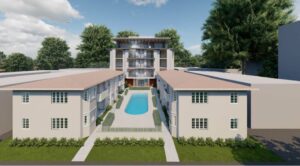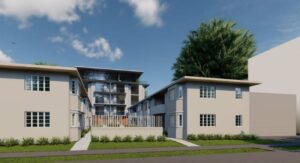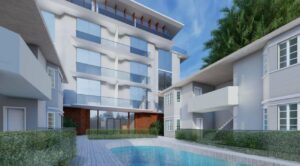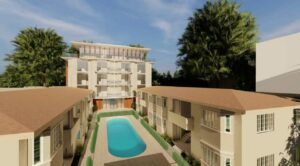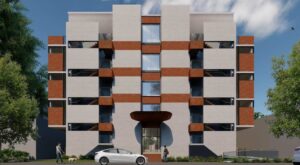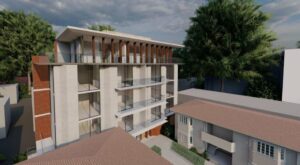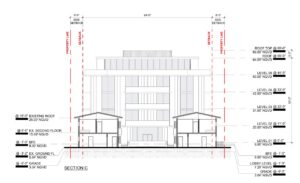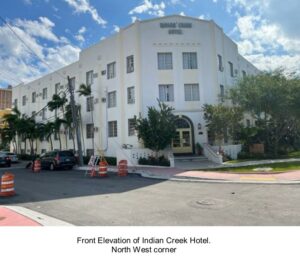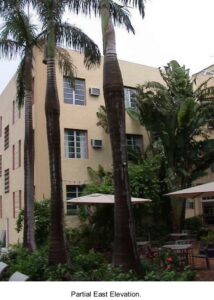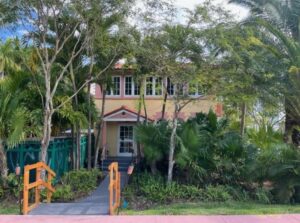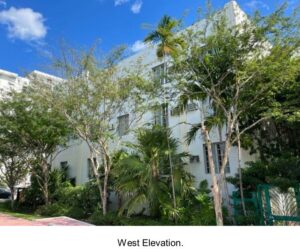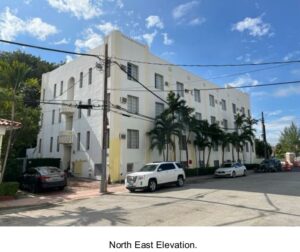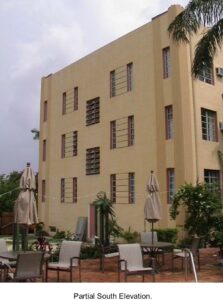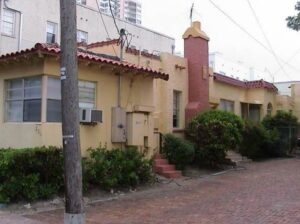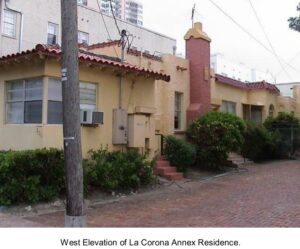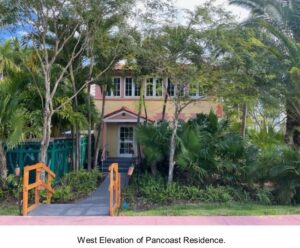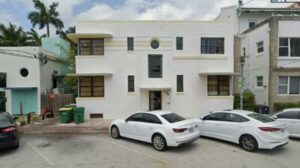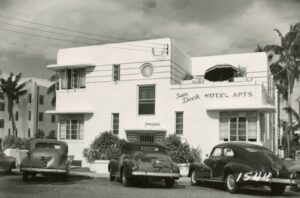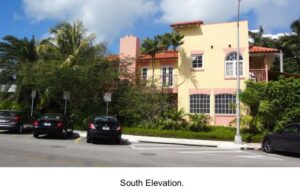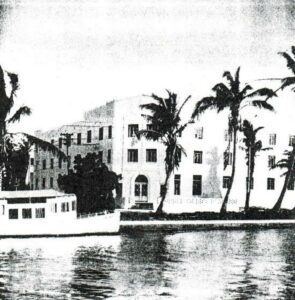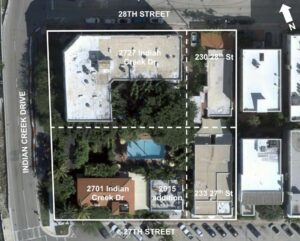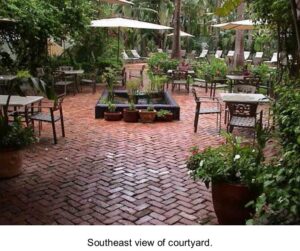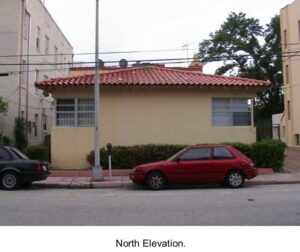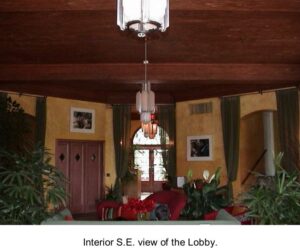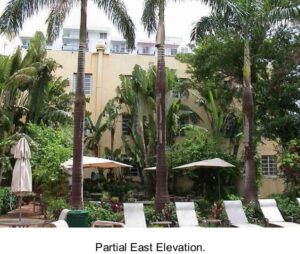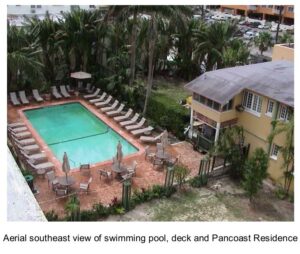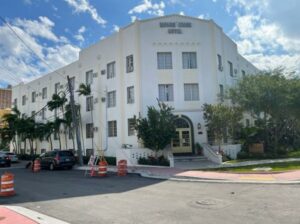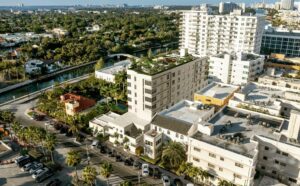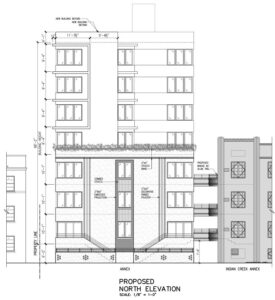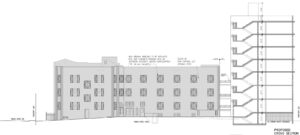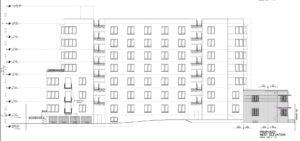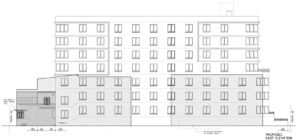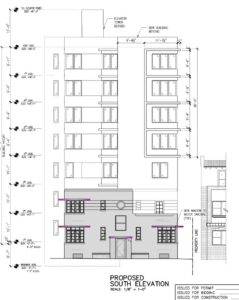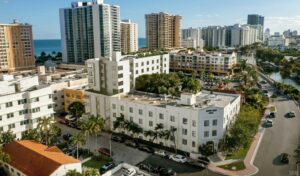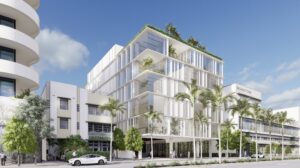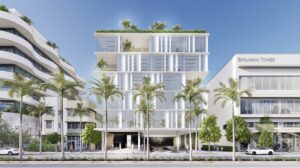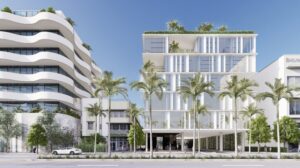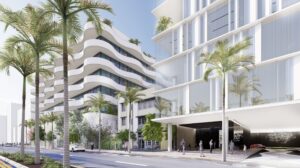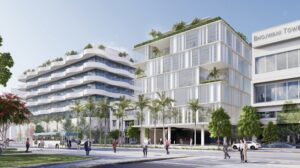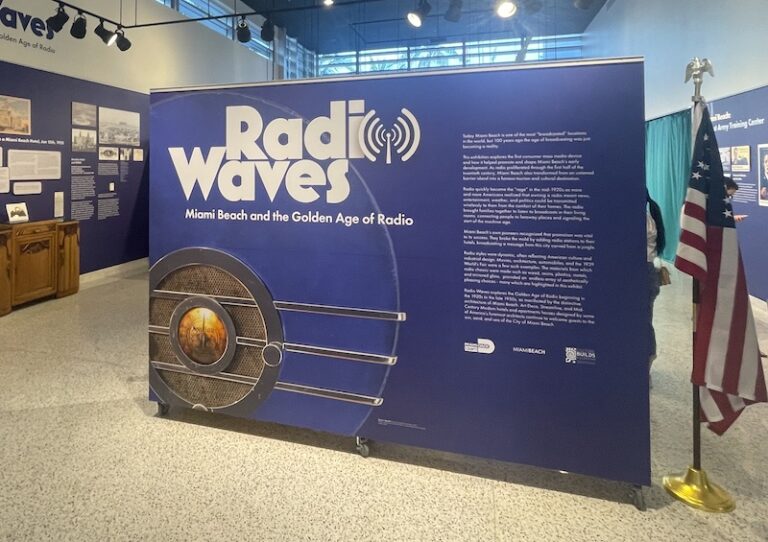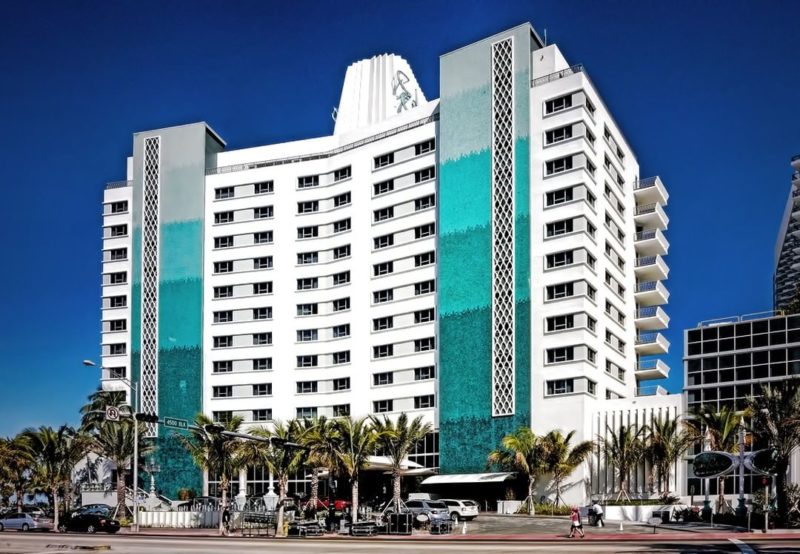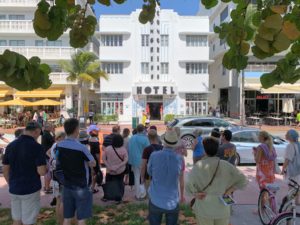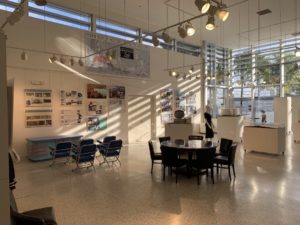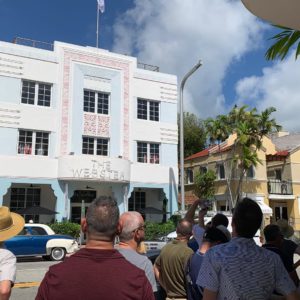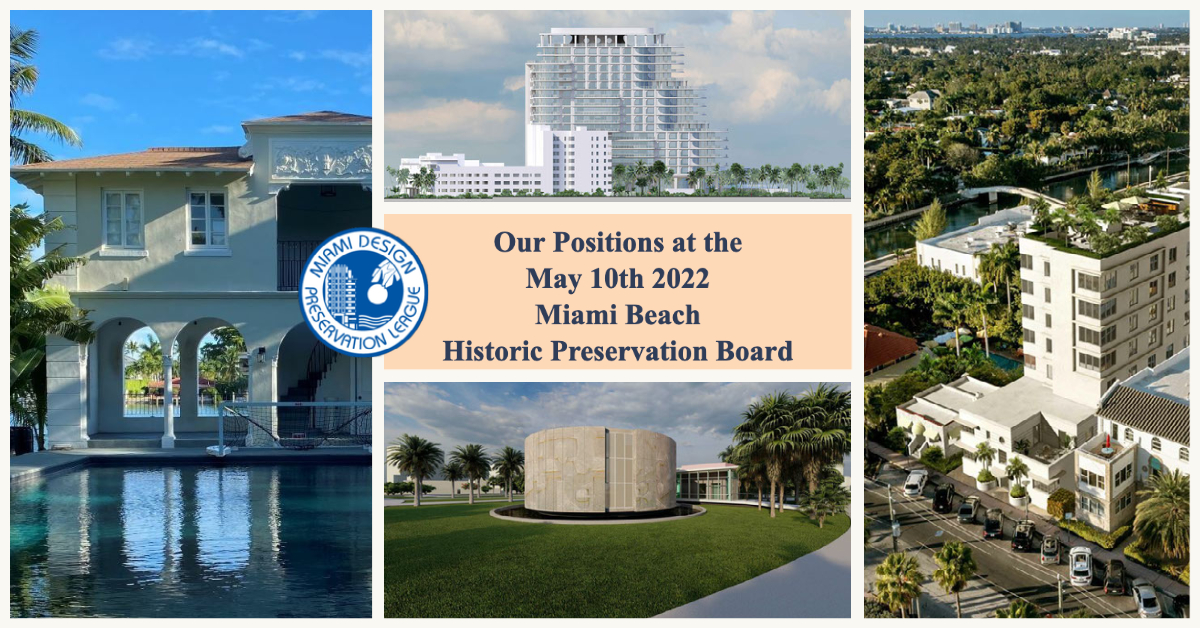
MDPL’s Advocacy Committee has reviewed the following applications and offers our positions below. Please note, the lack of a position on a project does not indicate support for or opposition to that project. To review the Historic Preservation Board Agenda, including public participation information:
HISTORIC DESIGNATIONS
2. HPB21-0485, 93 Palm Avenue (Al Capone House) – Designation of an Historic Site
Current site
A presentation by the City of Miami Beach Planning Department to the Historic Preservation Board relative to the proposed historic designation of 93 Palm Avenue as an individual local historic site
more details->93 Palm Avenue
City of Miami Beach Designation Report (excerpt below, click here to read the full report):
City of Miami Beach Staff Report Recommendation (excerpt below, click here to read the full report):
PLANNING DEPARTMENT RECOMMENDATIONS (Designation Report):
The Planning Department finds the proposed 93 Palm Avenue Historic Site to be in compliance with the Criteria for Designation numbers 2 & 3 listed in Section 118-592 in the Land Development Regulations of the City Code. Only one of the eight evaluation criteria is required to be satisfied for a property to be eligible for consideration of historic site designation.
While the home located at 93 Palm Avenue is indicative of 1920s residential architecture in Miami Beach, it is not a noteworthy example of the Mediterranean Revival style as it lacks the architectural detailing, massing and proportioning characteristic of this celebrated style. Additionally, no architect is listed on the building card and staff has not been able to locate any information indicating that the home was designed by an architect. Further, the home has been altered including the elimination of several of the more significant architectural details as noted in the preceding section of this evaluation. The most notable aspect of the home is the fact that Al Capone maintained a residence here from 1928 until his death in 1947.
In addition to a lack of architectural merits, staff has concerns relative to the vulnerability of the home with respect to impacts from climate change and sea level rise. Staff has visited the site and observed that the property to the east has a significantly higher yard elevation. It is also important to note that when the property to the west (currently a vacant lot) is developed, a minimum yard elevation of 6.56′ NGVD will be required. This will result in both neighboring properties having a yard elevation slightly above the existing first floor level of 93 Palm Avenue. Further, it is important to note that within this area of the City, new habitable floor area is required to be constructed at a minimum of 10.0′ NGVD, approximately 3′-6″ above the current first floor level. Maintaining the home at its current elevation will undoubtedly have ramifications in the near future.
Finally, staff does not believe that the association with Al Capone warrants the historical designation of this otherwise unremarkable example of a 1920s single-family home. Further, while the developer, Clarence Busch, was an important figure in the City’ development history, his association with 93 Palm Avenue is limited to the development of the property with a home to be sold to another owner. For the reasons outlined above, staff does not recommend that the Historic Preservation Board transmit the proposed historic site designation of 93 Palm Avenue to the Planning Board and City Commission.
Staff Analysis Recommendation
Staff recommends that the Historic Preservation Board does not transmit the attached designation report, pertaining to the proposed 93 Palm Avenue Historic Site, to the Planning Board, and that no further action be taken.
MDPL Position [May 10th 2022]:
MDPL asks the Historic Preservation Board to defer this item in order to allow for adequate research necessary to properly document the history and evolution of the property. Sadly, the City of Miami Beach Planning Department’s designation report seems to repeat their already-decided position that the property does not meet the very objective criteria of the historic designation process.
On this note, we believe that further research is needed to determine the architect of the property and other information that appears to be missing from the Planning Department report.
While MDPL was previously contacted by the owners’ representatives to meet and discuss the application, we have not had the opportunity to have a substantive meeting up to this point.
Since the HPB took its action, the structure is now currently protected on an interim basis under the Historic Preservation ordinance – therefore, any demolition or major renovation will go through the Historic Preservation Board during this period – great news. However, once the Board moves on this item, it will go to the Planning Board and then to the City Commission. It is possible that if the designation evidence is not sufficient, the Commission could rule against the designation of the property. This would pave the way for the current owner or a future owner to demolish the property without any HP review.
Therefore, it is imperative that this board and the community have more time to build the case for what is – objectively – one of the most historic homes on Miami Beach. Indeed, it’s hard to imagine Miami Beach without prohibition, Al Capone, Mediterranean architecture, Clarence Busch, and 93 Palm Avenue. Let’s not erase or cancel this important part of our city’s history.
MDPL Prior Position [from January 11, 2022]:
MDPL is alarmed by the staff report’s recommendation against historic designation of 93 Palm Island, particularly after providing evidence that the site meets 2 criteria for historic designation. MDPL believes that the site meets more than 2 criteria, although only one is legally required for designation eligibility. The City code, which the HPB is required to follow states in part:
“Sec. 118-592 – Criteria for designation.
(a) The historic preservation board shall have the authority to recommend that properties be designated….. If they are significant in the historical, architectural, cultural, aesthetic, or archeological heritage of the city, the county, state or nation. Such properties shall possess an integrity of location, design, settings, materials, workmanship, feeling or association and meet at least one of the following criteria…””
The architectural significance of this home has been all but erased by the preliminary staff report, which superficially mentions architectural elements that have been altered without highlighting the architectural elements and integrity of site which remain.
Built at an early time of Florida’s history, it is unfortunate but not unusual that the building does not have a listed architect. However, the detailing of the building, its massing, scale, and guest house / main house / cabana house configuration is a notable and it remains one of the earliest examples of the waterfront single-family home typology of Miami Beach.
Its association with Clarence Busch – the original developer of the island, underlines another layer of its history that is glossed over by the City’s report. This notable provenance points to satisfying an additional criterion:
(5) Represent the work of a master, serve as an outstanding or representative work of a master designer, architect or builder who contributed to our historical, aesthetic or architectural heritage
Sea Level Rise Criteria response: City Staff also assert that the home is not worthy of designation because new homes are required to be built at a higher in order to comply with the city’s recent zoning ordinances elevating the required height of new construction. In the case of this neighborhood, a new home would be required to be built 3’6” feet higher than the existing home’s floor elevation.
Far from being a reason to demolish, it should be made clear that this is a normal occurrence on Miami Beach. Staff analysis does not fully inform where the existing home is located in relation to existing sea level and when there may be a risk of sea level flooding. In addition, no analysis is provided of the finished floor of the three individual buildings. Such analysis should be a part of the next step in designation report development.
Our own analysis shows that Miami Beach homes continue to be well above sea level. Weighing the existing home’s finished floor level over its historic value to the fabric of our community is a dangerous precedent that could lead to the end of historic designation.
This issue is important particularly when there is no evidence of near-term risk of sustained flooding from sea level rise at the home. Initial analysis shows the finished floor would not be breached by the mean high water line until approximately 2100, based on existing sea level rise projections. Because of this, historic preservation will likely provide incentives to the owner – including waivers that will allow for the renovation of the property without requiring elevation. Without such designation, it would be unlikely that the property could be renovated without crossing the 50% threshold requiring major upgrades and added cost.
MDPL recommends that the HPB proceed to direct city staff to prepare a designation report in order to move towards the next step: a quasi-judicial public hearing weighing evidence and allowing for public participation. In addition, we respectfully request that this item be continued so as to allow MDPL proper time to prepare its case. The current agenda requirement that all documents be submitted 3 business days before the hearing is a burden on our due process, since the staff report came out only 5 business days before the meeting.
Finally, MDPL remains committed to the survey, identification, and protection of historic resources throughout Miami Beach. Single-family homes are an essential part of the built history and story of Miami Beach. This home in particular meets multiple criteria for historic designation. Demolition of this property would be a substantial loss to the social, cultural, and environmental heritage of our community. We formally request that the HPB recommend designation of 93 Palm Avenue.
CONTINUED ITEMS
3. HPB21-0481, 1901 Collins Avenue — Shore Club Hotel
Current site
Proposed Structures
An application has been filed requesting a Certificate of Appropriateness for the partial demolition and renovation of two buildings on the site, the total demolition of two buildings, the construction of two new additions and landscape and hardscape modifications.
more details->1901 Collins Avenue
City of Miami Beach Staff Report Recommendation (excerpt below, click here to read the full report):
Staff Analysis:The applicant is proposing a comprehensive renovation of the subject property which contains two Contributing hotel structures and multiple later additions. Additionally, the applicant is proposing to construct a new residential tower addition at the center of the site to replace the existing 20-story addition and a 2-story cabana structure at the eastern portion of the site. Further, landscape and hardscape improvements are proposed throughout the site.
UPDATE
On March 8, 2022, the Board reviewed and continued the subject application in order to give the applicant additional time to address concerns expressed by the Board. Since the March meeting, the applicant has submitted revised plans in response to the Board’s concerns including the following modifications.
- The entirety of the 1949 south wing of the Shore Club Hotel and the 8-story 1955 Grossman addition is proposed to be retained and restored.
- The residential tower addition has been reconfigured to maintain the Grossman addition including a reduction of the floor area and width and an increase in length.
- The applicants request for an increase in the floor plate size for the addition has been modified based upon the revised tower design. According to the regulations outlined in Section 142-246(f)(2) of the City Code, the maximum floor plate size for the portion of an addition that exceeds 50’-0” in building height is 15,000 sq. ft., excluding projecting balconies. The Historic Preservation Board may allow for an increase in the overall floor plate, up to a maximum of 20,000 sq. ft. per floor, excluding balconies, in accordance with the Certificate of Appropriateness criteria. The applicant was previously requesting approval for floor plate sizes that range between 16,280 sq. ft. and 19,177 sq. ft. for levels 5 through 12. The applicant has submitted revised plans with all floor plates except for two levels within the 15,000 sq. ft and is currently requesting a floor plate size of 15,918 sq. ft. for levels 6 and 7 only.
- A significant portion of the Cromwell Hotel lobby is proposed to be restored consistent with available historical documentation.
- A memorandum from Heritage Architectural Associates, dated April 6, 2022 has been submitted which outlines the likely original ribbed (Flutex) glass of the corner windows within the zig-zag projections along the Collins Avenue façade. Based upon this evidence, the applicant is proposing to install a similar glass type within these window openings
Staff believes that the applicant has successfully addressed the concerns expressed by the Board while maintaining the original design intention of the previously proposed tower. Moreover, the currently proposed modifications result in a design that achieves a greater level of compatibility with the surrounding historic district.
In summary, staff is staff remains supportive of the proposed project and recommends approval as noted below.
RECOMMENDATION
In view of the foregoing analysis, staff recommends the application be approved subject to the conditions enumerated in the attached draft Order, which address the inconsistencies with the aforementioned Certificate of Appropriateness criteria.
MDPL Position
MDPL Position [updated for May 10th 2022]:
We thank the board for listening to our concerns regarding the proposed demolition of the Melvin Grossman addition in the original application. Since the last meeting, the applicants have significantly redesigned their proposal to retain the contributing structure. We thank the applicants for listening to these concerns and for adhering to the protocol of protecting contributing structures within the district.
While we advocated for the retention of the Melvin Grossman building, we also expected that its retention would have a significant impact on reducing the massing and scale of the proposed new tower. Unfortunately, we don’t see a noticeable improvement in the compatibility of the new tower in relation to the historic, contributing structures on the site. The reduction in the tower’s mass was taken from the interior courtyard-facing section, leaving the overall envelope of the new tower appearing substantially similar to the original proposal.
The existing Chipperfield tower on the site continues to be a significantly superior massing program in relation to the historic buildings. We also believe the adjacent Setai tower’s size and massing is incompatible with the historic surroundings. In fact, the proposed Setai tower and other towers along the beach helped precipitate a downzoning in the city in the 1990s – commonly known as Save Miami Beach.
However, just because the Setai tower is too big does not mean that a tower that is even longer than the Setai should be approved. Two wrongs don’t make a right… The objective standards for Historic Preservation still need to be adhered to. The mistakes of the past should not become mistakes of the present.
Specifically, we find that the new proposed tower continues to overwhelm the collection of historic structures on the site. Indeed, just a few years ago the zoning only allowed 50 feet maximum height for new construction. The Commission’s zoning change to allow 200′ in this area is conditioned on applicants meeting the stringent requirements of the preservation code. Such a zoning allowance should be used sparingly – if ever used.
Based on section 118-564 of the code, we believe the following issues remain to be addressed (emphasis ours):
3d. The proposed structure, and/or additions to an existing structure are appropriate to and compatible with the environment and adjacent structures, and enhance the appearance of the surrounding properties, or the purposes for which the district was created.
3e. The design and layout of the proposed site plan, as well as all new and existing buildings and public interior spaces shall be reviewed so as to provide an efficient arrangement of land uses. Particular attention shall be given to safety, crime prevention and fire protection, relationship to the surrounding neighborhood, impact on preserving historic character of the neighborhood and district, contiguous and adjacent buildings and lands, pedestrian sight lines and view corridors.
3j. Any proposed new structure shall have an orientation and massing which is sensitive to and compatible with the building site and surrounding area and which creates or maintains important view corridor(s).
To conclude, the new tower is simply too large. We believe that a significant reduction in its overall length and scale needs to occur in order to achieve the strict standards of compatibility that are central to the purpose of historic preservation.
We ask the Historic Preservation Board to A. Deny the application or B. require the applicants to further refine their design, with emphasis on a significant reduction in the overall new tower total size, and a more sensitive and respectful separation between the Cromwell and the new tower. [It should be repeated that a project with full entitlements is already approved by this board, one that includes the adaptive reuse and expansion of the Chipperfield tower. That project is much more in line with the code than what is currently before you.]
Prior MDPL Position [from March 8, 2022]:
We are strongly opposed to the proposed demolition of the contributing Melvin Grossman addition of the historic Shore Club hotel. The proposal essentially keeps only the main lobby/facade of the Shore Club, leaving the bulk of floor area for the new condominium residence tower. Removal of such significant historic elements will erase the opportunity for visitors to experience seeing and inhabiting/staying at the historic Shore Club hotel rooms overlooking the Atlantic Ocean (see below red historic building proposed to be demolished)
Overall, there is simply too much demolition being proposed for this property. We remain concerned about Sunny Isles-ification of Miami Beach. Contributing buildings should not be sacrificed to expand new construction.
In view of the foregoing, MDPL opposes this application and asks that it be denied.
NEW APPLICATIONS
4. HPB22-0505, 2100 Collins Avenue — Collins Park Rotunda
Current site
Proposed Structures
An application has been filed requesting a Certificate of Appropriateness for the renovation of the Collins Park Rotunda building including the construction of an attached addition.
more details->2100 Collins Avenue
City of Miami Beach Staff Report Recommendation (excerpt below, click here to read the full report):
Staff Analysis:
The Collins Park Rotunda was originally constructed in 1962 as part of a larger Public Library building designed by architect A. Herbert Mathes. The exterior of the rotunda consists of a series of sand cast concrete panels containing artwork created by artist Albert Vrana. In 2004, a new public library was constructed at 227 22nd Street and the existing library was demolished with the exception of the rotunda structure. Since that time, the building has been vacant except for occasional special event use.
The applicant is currently requesting approval for the renovation of the rotunda and construction of an attached 1-story addition to be used as a performing arts venue. The addition will serve as the entrance to the performance venue and will also house restrooms. Staff has no objection to the introduction of the modest addition which has been inspired by the linear design of the previously existing library. Further, the addition will connect to the rotunda at the same point as the original library building and will not require the demolition of any of the cast concrete panels. In summary, staff is enthusiastic about the return to public use of this unique architectural folly and recommends approval as noted below.
RECOMMENDATION
In view of the foregoing analysis, staff recommends the application be approved subject to the conditions enumerated in the attached draft Order.
MDPL Position:
We appreciate the need to activate the structure, which was once a thriving part of the community but has remained underutilized for far too long. However, we have concerns about the compatibility of the proposed addition to the sculptural Rotunda. The existing connection to and design of the addition merits further study. As proposed, it does not appear to be compatible with the rotunda sculpture. We strongly suggest studying the original connection design from when the Rotunda was part of the mid-century library (now demolished). That connection had a much more sensitive design, and it could help inform the design of the new addition. As currently proposed, however, we do not believe the addition is compatible.
5. HPB21-0498, 7418 Harding Avenue
Current site
Proposed Structures
An application has been filed requesting a Certificate of Appropriateness for the partial demolition, renovation and restoration of two buildings, the total demolition of one building and the construction of a new detached addition as part of a new hotel development on the site including variances from the minimum hotel unit size and required rear setback.
more details->7418 Harding Avenue
City of Miami Beach Staff Report Recommendation (excerpt below, click here to read the full report):
Staff Analysis:
The subject collection of buildings, originally known as the Harding Apartments, was constructed in 1946 and designed by Frank Wyatt Woods in the Post War Modern style of architecture. The site contains three similarly designed buildings arranged around a central courtyard fronting onto Harding Avenue.
The applicant is currently proposing the construction of a detached 5-story addition at the rear of the site as part of a new hotel development. The proposed project consists of 48 hotel units and a new courtyard pool and deck. In order to construct the new addition, the applicant is proposing the total demolition of the rear building located along Harding Court (the alley). The two buildings that front Harding Avenue are proposed to be retained and substantially restored including the replacement of the through-the-wall air conditioning units with central air conditioning and the replacement of the existing non-original windows with new impact resistant windows with an historically accurate muntin configuration.
Staff is supportive of the contemporary design language of the proposed addition, which incorporates variations in surface materials and changes in plane. Additionally, the proposed location of the addition along the rear of the site, setback approximately 110′-0″ from the Harding Avenue property line minimizes its impact on the existing Contributing Buildings on the site and the surrounding historic district. Additionally, the applicant is proposing to construct a new slightly elevated pool and deck within the existing courtyard. Staff certainly understands the desire to provide amenities for hotel guests, however, staff is concerned with the limited landscaping proposed within this area. Consequently, staff recommends that the pool and deck be reduced in size in order to introduce additional landscaping including trees.
Finally, the applicant is requesting a waiver of the off-street loading space requirements outlined in Section 130-101 of the City Code. The project is required to provide one off-street loading space. As currently proposed, the applicant is providing one off-street loading space along the alley which requires a rear setback variance. The Historic Preservation Board may waive the requirements for off-street loading spaces for properties containing a Contributing structure, provided that a detailed plan delineating on-street loading is approved by the Parking Department prior to the issuance of a building permit. The applicant has preliminarily met with the Parking Department and will submit an on-street loading plan as required. Consequently, staff does not object to the granting of this waiver, however, if the Board grants the waiver, staff recommends that the loading space along the alley be replaced with additional landscaping.
VARIANCE ANALYSIS
The applicant is requesting the following variances:
- A variance to reduce by 30 to 100 sq. ft. the minimum required unit size of 300 sq. ft. for units in Contributing buildings which are substantially retained and restored in order to provide hotel units that range in size from 200 to 270 sq. ft. Variance requested from:
Sec. 142-870.15. – Development regulations and area requirements.
(b) The unit size requirements for the North Beach National Register Overlay district are as follows:
Minimum Unit Size (Square Feet): “Contributing” buildings which are substantially retained and restored—300
The applicant is proposing to retain and substantially restore two Contributing buildings including the reconfiguration of the existing large multi-family units into smaller hotel units ranging in size from 200 to 270 sq. ft. Staff would note that the RM-1 zoning district regulations allow for the retention of existing hotel units sizes of at least 200 sq. ft. Since these buildings were originally constructed as apartments, the 200 sq. ft. unit size would not apply. Additionally, hotel units within rooftop additions to Contributing buildings are also permitted with a minimum unit size of 200 sq. ft. Further, staff would note that the hotel units located within the proposed addition comply with the minimum unit size requirements. Compliance with the minimum hotel unit size of 300 sq. ft. may conflict with existing window openings requiring modifications to the original design. As such, staff finds that the retention of two Contributing buildings on the site creates the practical difficulties that justify the variance requested.
- A variance to reduce by 5′-0″ the minimum required rear setback of 5′-0″ in order to provide on-site passenger drop-off and loading spaces at a zero (0′-0″) setback from the west side property line. Variance requested from:
Sec. 142-870.15. – Development regulations and area requirements.
(e) The setback requirements for all buildings located in the RM-1 district within the North Beach National Register Overlay district are as follows:
(1) Setbacks for at-grade parking and subterranean levels, if permitted, shall be the same as set forth in section 142-156.
Sec. 142-156. – Setback requirements.
(a) The setback requirements for the RM-1 residential multifamily, low density district are as follows:
At-grade parking lot on the same lot, Rear: 5 feet abutting an alley
Two passenger drop-off spaces and one loading space are proposed to be introduced along the alley (Harding Court) with a zero (0′-0″) setback from the rear property line. Staff believes that the proposed location of these spaces along the alley is the most appropriate option for this primarily residential neighborhood. Further, staff would note that the applicant is requesting a waiver of the on-site loading requirement and if granted by the Board, staff is recommending that the loading space be replaced with additional landscaping. Consequently, staff finds that the unique condition of a hotel in a primarily residential neighborhood satisfies the practical difficulties criteria for approval.
RECOMMENDATION
In view of the foregoing analysis, staff recommends the request for a Certificate of Appropriateness and variances be approved, subject to the conditions enumerated in the attached draft Order, which address the inconsistencies with the aforementioned Certificate of Appropriateness criteria and Hardship and Practical Difficulties criteria, as applicable.
MDPL Position:
We appreciate the proposal to renovate and restore the existing structures facing Harding Avenue. However, we do not believe that the new proposed addition at the back of the lot is compatible with the remaining structures on the site. In particular, the fenestration of the new structure – entirely glass with no muntons – seems to be in striking contrast to the historic buildings. We recommend further study to ensure the new addition is distinct yet compatible with the structures on site.
6. HPB22-0501, 2701 and 2727 Indian Creek Drive, 233 27th Street and 230 28th Street — Indian Creek Hotel
Current site
Proposed Structures
An application has been filed requesting a Certificate of Appropriateness for the partial demolition, renovation and restoration of the building located at 233 27th Street including the construction of an attached addition, the partial demolition, renovation, restoration and relocation of the building located at 230 28th Street, the total demolition of an accessory kitchen building, one or more waivers and variances from the minimum hotel unit size and required setbacks.
more details->2701 and 2727 Indian Creek Drive, 233 27th Street and 230 28th Street
City of Miami Beach Staff Report Recommendation (excerpt below, click here to read the full report):
Staff Analysis:
The subject site is comprised of four parcels containing five structures, four of which are classified as Contributing in the Miami Beach Historic Properties Database. The northwest parcel, the Indian Creek Hotel (located at 2727 Indian Creek Drive), was constructed in 1936 and designed by George L. Pfeiffer in the Art Deco style of architecture. The southwest parcel, 2701 Indian Creek Drive, contains two structures; a 2-story single-family residence constructed in 1932 and designed by Russell T. Pancoast in a Wood Frame Vernacular/Mediterranean Revival Transitional style of architecture and a 1-story detached kitchen addition, constructed in 2015. The southeast parcel contains a 2-story multi-family residential building constructed in 1935 and designed by Henry Hohauser in the Streamline Moderne style of architecture. The northeast parcel contains a 1-story single-family residence constructed in 1922 and designed in the Mission style of architecture.
The currently proposed scope of work is generally limited to the eastern portion of the site and includes the total demolition of the 2015 kitchen addition and relocation of the 1-story single family home (230 28 th Street) to the kitchen location, the partial demolition of the 2- story multifamily building (233 27 th Street) and the construction of an attached 7-story hotel addition.
Partial demolition, restoration and relocation of the 1- story building located at 230 28th Street and the total demolition of the 2015 kitchen addition
The existing building located at 230 28th Street was constructed in 1922 as a single-family residence and was originally located at 2814 Collins Avenue. In 1924, the home was moved to its current location to allow for the construction of the La Corona Hotel building. Several additions to the home have been added over time including an addition to the front of the house in 1940 (see image below). The applicant is proposing the restoration of the exterior facades of the home including the removal of the front addition and the demolition of the rear approximately 50% of the structure. Staff has worked with the architect on the details of the restoration and believes that the current proposal is substantially consistent with available historical documentation. Further, staff has no objection to the partial demolition and would note that the portion of the building to be retained contains the majority of the remaining significant architectural features.
Additionally, after nearly 100 years, the home is again proposed to be moved. The applicant is proposing to relocate the restored home along 27th Street between the 2-story Pancoast home and the 2-story Hohauser apartment building (to replace the kitchen building constructed in 2015, see image to the right). While staff acknowledges the thoughtful design of the kitchen addition, staff has no objection to its demolition in order accommodate the relocation of the restored 1922 building. Staff has only one concern relative to the proposed elevation of the home (6.33’ NGVD). Staff recommends that the building be raised an additional approximately 1’-8” to an elevation of 8.00’ NGVD (the minimum required elevation for new residential and hotel buildings in this area) to be more resilient for the future.
Partial demolition and restoration of the 2-story building located at 233 27th Street and the construction of an attached 7-story hotel addition
The existing building located at 233 27th Street (originally known as the Sun Deck Hotel Apartments) was constructed in 1935 and was designed by architect Henry Hohauser. As indicated in the 1935 plans, the building was originally designed with an approximately 20’-0” setback from the front property line. In 1936, a permit for an addition to the front of the building, also designed by Hohauser, was issued and in 1968, a permit to fill in the rest of the second floor along the front of the building was issued.
The applicant is currently proposing to restore the building to the 1936 Hohauser design, consistent with the 1948 photograph. Staff is extremely supportive of the proposed restoration of this excellent example of low-scale Art Deco architecture. The restoration proposed includes the reintroduction of the planters and architectural detailing at the entry door, the reintroduction of the second level terrace, the replacement of the through-the-wall air conditioning units with central air conditioning and the replacement of the existing non-original windows with new impact resistant windows with an historically accurate muntin configuration.
Additionally, the applicant is proposing to construct a new 7-story addition on the site containing 144 hotel units and a rooftop amenity deck. In order to accommodate the addition, the applicant is proposing the demolition of approximately 60% of the rear of the Hohauser building and two later 1-story rear additions. The new addition will be attached to the rear of the remaining portion of the Hohauser building and will extend north into the lot where the 1922 home to be moved, is currently located.
Staff is generally supportive of the design for the proposed 7-story addition, as it has been developed in a manner that responds well to the existing buildings and site conditions. In this regard, the addition is setback approximately 33’-0” from the front façade of the Hohauser building on the south. On the north side, the addition steps back after the first three floors, maintaining the 3-story street wall of the south side of 28 th Street. Finally, changes in plane in combination with architectural projections, serve to break down the scale of the proposed addition. Staff recommends however, that the west façade be further developed in a manner that is commensurate with the north, east and south facades.
Indian Creek Hotel restoration and modifications
The applicant is proposing to replace all non-original windows on the Indian Creek Hotel building with new impact resistant casement windows with an historically accurate muntin configuration. Additionally, the existing through-the-wall and through-the-window air conditioning units will be replaced with a new central air conditioning system. Staff is extremely supportive of the proposed restoration work which will make the building more resilient for the future and will significantly enhance the character of the original design.
Additionally, to connect the Indian Creek Hotel building to the new addition, the applicant is proposing to construct a new bridge structures between the buildings. This modification will require the demolition of the existing stairs, landings and guardrails at the east façade of the eastern wing. The demolition requested does not require the demolition of any significant exterior architectural features. As such, staff has no objection to this request.
Waivers
The applicant is requesting a waiver related to the retention of non-conforming setbacks and parking credits for the 1935 Hohauser building. The thresholds for retaining non-conforming floor area, height, setbacks and parking credits are outlined in Section 118-395(b) of the City Code. If the Board finds that the criteria outlined in Section 118-395 of the City Code below are satisfied, a waiver may be granted.
Sec. 118-395. – Repair and/or rehabilitation of nonconforming buildings and uses.
(b) Nonconforming buildings.
(2) Nonconforming buildings which are repaired or rehabilitated by more than 50 percent of the value of the building as determined by the building official shall be subject to the following conditions:
d. Development regulations for buildings located within a designated historic district or for an historic site:
1. The existing structure’s floor area, height, setbacks and any existing parking credits may remain, if the following portions of the building remain substantially intact, and are retained, preserved and restored:i. At least 75 percent of the front and street side walls, exclusive ofwindow openings;
ii. For structures that are set back two or more feet from interior side property lines, at least 66 percent of the remaining interior side walls, exclusive of window openings; and
iii. All architecturally significant public interiors.
2. For the replication or restoration of contributing buildings, but not for noncontributing buildings, the historic preservation board may, at their discretion, waive the requirements of subsection (b)(2)d.1. above, and allow for the retention of the existing structure’s floor area, height, setbacks or parking credits, if at least one of the following criteria is satisfied, as determined by the historic preservation board:
The structure is architecturally significant in terms of design, scale, or massing;
The structure embodies a distinctive style that is unique to Miami Beach or the historic district in which it is located;
The structure is associated with the life or events of significant persons in the City;
The structure represents the outstanding work of a master designer, architect or builder who contributed to our historical, aesthetic or architectural heritage;
The structure has yielded or is likely to yield information important in prehistory or history; or
vi. The structure is listed in the National Register of Historic Places.
Staff has found that Criteria i., ii. & vi. above are satisfied and recommends in favor of the requested waiver.
Additionally, the applicant is requesting a waiver of the off-street loading space requirements outlined in Section 130-101 of the City Code. The project is required to provide three off-street loading spaces and no loading spaces are proposed to be provided. The Historic Preservation Board may waive the requirements for off-street loading spaces for properties containing a Contributing structure, provided that a detailed plan delineating on-street loading is approved by the Parking Department prior the issuance of a building permit. The applicant has preliminarily met with the Parking Department and will submit an on -street loading plan as required. Consequently, staff does not object to the granting of this waiver.
VARIANCE ANALYSIS
The applicant is requesting the following variances:
1. A variance to reduce by 15’-1 ½”, the minimum required pedestal front (27th Street) setback of 20’-0”, in order to relocate the contributing building at 230 28th Street to be located along 27th Street at a setback of 4’-10 ½” from the south side property line. Variance requested from:
Sec. 142-218. – Setback requirements. (a) The setback requirements in the RM-2 residential multifamily, medium intensity district are as follows: Subterranean and pedestal, Front: 20’-0”
The applicant is proposing to restore and relocate the existing 1922 building currently located at 230 28 th Street to 27th Street between the 2 -story Pancoast house and the 2-story Hohauser apartment building. The Pancoast house has an existing non-conforming front setback of 7’-9 ½” and the Hohauser building has an existing non-conforming front setback of 4’-10 ½”. Further, the 1922 building currently has a non- confronting front setback of 4’-7” from the 28 th Street front property line. Staff believes it is important to maintain the unique development pattern of this area of the City and finds that these special conditions justify the requested variance.
2. A variance to reduce by 6’-1 ½”, the minimum required tower front (27th Street) setback of 39’-0”, in order to construct a new addition at a setback of 32’-10 ½” from the south side property line. Variance requested from: Sec. 142-218. – Setback requirements. (a) The setback requirements in the RM-2 residential multifamily, medium intensity district are as follows: Tower, Front: 20 feet + 1 foot for every 1 foot increase in height above 50 feet, to a maximum of 50 feet, then shall remain constant.
3. A variance to reduce by 4’-8 ½”, the minimum required pedestal front (28th Street) setback of 20’-0”, in order to construct a new addition at a setback of 15’-3 ½” from the north side property line. Variance requested from: Sec. 142-218. – Setback requirements. (a) The setback requirements in the RM-2 residential multifamily, medium intensity district are as follows: Subterranean and pedestal, Front: 20’-0”
4. A variance to reduce by 16’-0 ½”, the minimum required tower front (28th Street) setback of 39’-0”, in order to construct a new addition at a setback of 22’-11 ½” from the north side property line. Variance requested from: Sec. 142-218. – Setback requirements. (a) The setback requirements in the RM-2 residential multifamily, medium intensity district are as follows: Tower, Front: 20 feet + 1 foot for every 1 foot increase in height above 50 feet, to a maximum of 50 feet, then shall remain constant
. A variance to reduce by 10’-7 ¼”, the minimum required pedestal side interior setback of 15’-11”, in order to construct a new addition at a setback of 5’-3 ¾” from the east side property line. Variance requested from: Sec. 142-218. – Setback requirements. (a) The setback requirements in the RM-2 residential multifamily, medium intensity district are as follows: Subterranean and pedestal, Side, Interior, Lots equal or greater than 65 feet in width: Minimum 10 feet or 8% of lot width, whichever is greater
6. A variance to reduce by 12’-6 ¼”, the minimum required tower side interior setback of 17’- 10”, in order to construct a new addition at a setback of 5’-3 ¾” from the east side property line. Variance requested from: Sec. 142-218. – Setback requirements. (a) The setback requirements in the RM-2 residential multifamily, medium intensity district are as follows: Tower, Side, Interior: The required pedestal setback plus 0.10 of the height of the tower portion of the building
Variances 2 through 6 are related to the proposed setbacks for the new 7-story addition. The addition is located along the east interior side of the property and extends from the rear of the Hohauser building north to 28 th Street. Staff believes that the proposed location of the addition will have the least impact on the Contributing buildings and the surrounding historic district. Additionally, the applicant is proposing to substantially retain all four Contributing buildings on the site. Staff believes that the existing conditions, including the retention of all Contributing buildings and the historic courtyard create the practical difficulties that warrant the approval of the requested variances.
7. A variance from the minimum required hotel unit size: 15% of the hotel units shall be between 300 and 335 sq. ft. and 85% of units shall be larger than 335 sq. ft., in order to permit 104 hotel units (93%) with a size less than 300 sq. ft. (the smallest at 241 sq. ft). Variance requested from: Sec. 142-217. – Area requirements. The area requirements in the RM-2 residential multifamily, medium intensity district are as follows: Minimum Unit Size (Square feet), Hotel units: 15%: 300-335, 85%: 335+
The new hotel addition is proposed to contain 144 units ranging in size from 241 sq. ft. to 422 sq. ft.; however, the majority of the units (93%) are less than the minimum size requirement. Staff would note that the RM-2 zoning district regulations allow for the reconfiguration of hotel units with a minimum area of 200 sq. ft. when such units are within an existing structure and located in a local historic district. The Board has recognized previously that the retention of the existing exterior window configuration and architectural features of a building are sometimes in conflict with the interior renovations of the spaces in historic structures and may create practical difficulties when adjusting to the required unit size. In this case, the property currently contains non-conforming hotel unit sizes within the Contributing Indian Creek Hotel building. Staff believes that minor modifications to the interior layout of the new addition could be made in order to satisfy the minimum unit size requirement and has concluded that the variance for new undersized units does not satisfy the practical difficulties or hardship criteria, and as such, staff recommends denial this variance.
RECOMMENDATION
In view of the foregoing analysis, staff recommends the request for a Certificate of Appropriateness and variances be approved, subject to the conditions enumerated in the attached draft Order, which address the inconsistencies with the aforementioned Certificate of Appropriateness criteria and Hardship and Practical Difficulties criteria, as applicable.
MDPL Position:
MDPL supports the Miami Beach staff recommendations for this project. We appreciate the contextuality of the new addition behind the Art Deco structure. Unlike many new proposals which are mostly glass, this addition has a typology that feels distinct and compatible with the surrounding properties.
DISCUSSION ITEMS
7. Discussion Regarding Historic Oceanfront Hotels that are currently exposed to the elements and unprotected while awaiting renovation
8. Height Increase for Office Buildings in the CD-3 District – Ordinance
MDPL Position:
MDPL believes that any height increases proposed in a historic district should be part of an adopted community master plan.
In the case of this proposal, we have concerns about the lack of front setback requirements for new developments located along the east side Washington Avenue north of Lincoln Road and South of 17 Street in the CD-3 zoning district as part of the proposed height increase from 50 to 80 feet.
As presented, the applicant’s proposed project appears to have zero-foot front and side setbacks, which has the risk of overwhelming the historic Greenview Hotel located directly to the north.
This appears to be a situation that may violate the Secretary of Interior Standards if the proposed structure is not sensitive to its adjacent historic structures. Placing the final decision on the Historic Preservation Board – without proactive planning to ensure compatibility of the new structure – may lead to significant delays in the approval/entitlement process.
For this reason, we are making our recommendations public well in advance, in hopes that the HPB and/or Commission can work on additional setbacks to ensure compatibility.
As you are aware, a similar issue has come up regarding compatibility as it relates to a new proposed office project at 5th Street and Michigan Avenue. When the project arrived at the HPB, multiple adjacent property owners voiced their concerns about the lack of setbacks and the overwhelming nature of the new structure.
Now – while the code is proposed to be amended – is the proper time to address setbacks and compatibility concerns, not during design review at a land use board.
